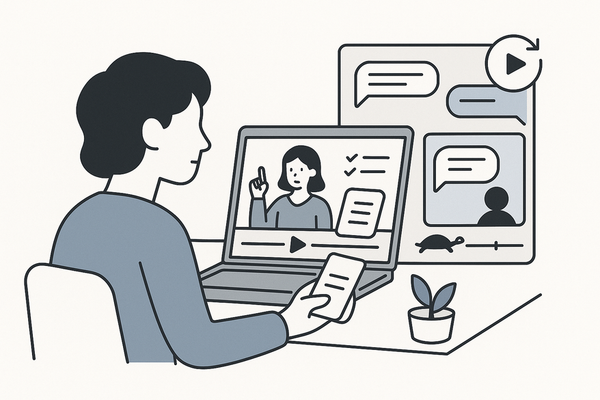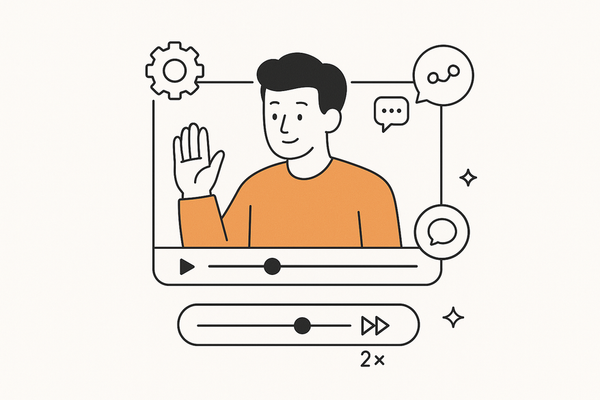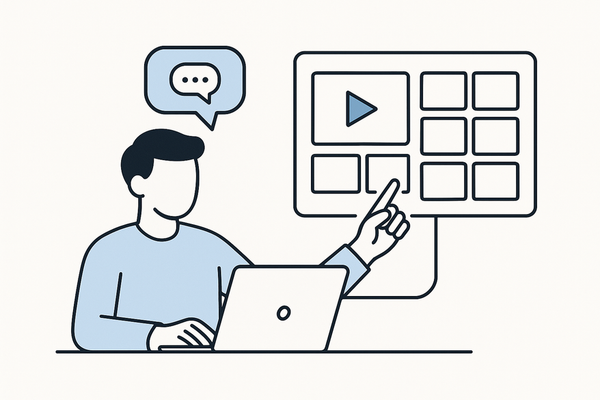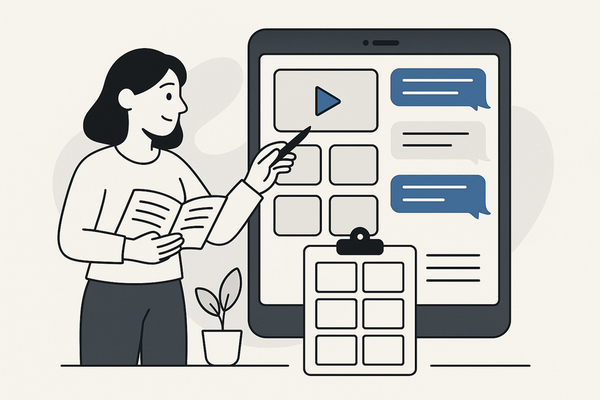Mastering A/B Test Chat Story Video Variations for Maximum Impact
Learn how to use A/B test chat story video variations to optimize engagement and conversions with data-driven insights and effective split testing strategies.
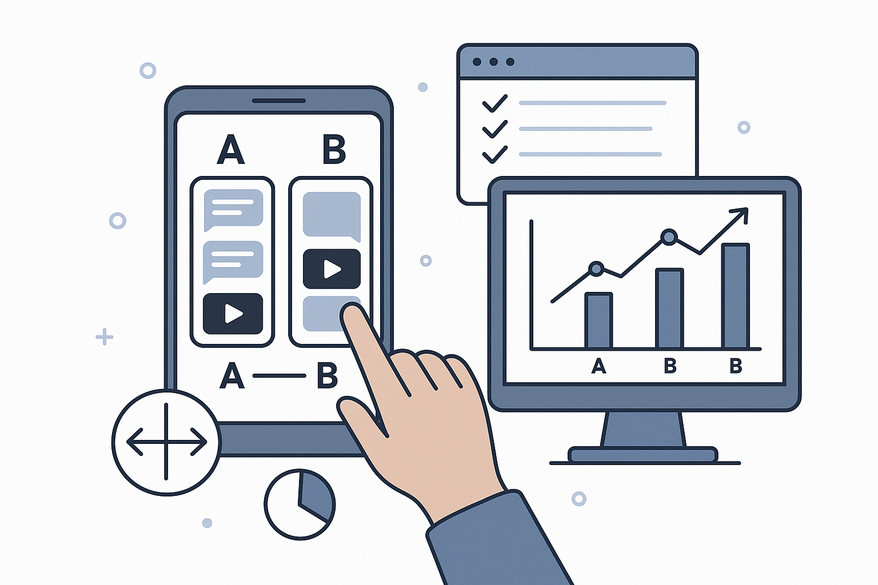
Estimated reading time: 8 minutes
Key Takeaways
- Definition of A/B testing for chat story videos
- Benefits include improved engagement and conversion metrics
- Step-by-step framework to plan and execute tests
- Comparison between fake and authentic chat video approaches
- Tools and best practices to streamline your experiments
Table of Contents
- Introduction
- Understanding A/B Testing Concepts
- Deep Dive into Fake vs Authentic Chat Videos
- Planning and Executing Your Tests
- Fake Chat vs Real Chat Comparison
- Split Test Strategies
- Tools and Best Practices
- Conclusion
- Future Outlook
Introduction
Chat story videos feel like real text threads on your phone. They pull viewers in by mimicking messaging apps. When done right, they keep people watching and talking about your brand.
“A/B test chat story video variations” means running structured experiments on different creative elements of chat story videos—such as dialogue, pacing, visuals, or narrative structure—to see which version best meets goals like engagement or conversions. Optimizely | Firework
Related terms you’ll see in this post:
- A/B testing fake chat video – testing variations of fully scripted or simulated chats
- Split test chat video content – dividing the audience to compare different chat video styles
Purpose: Show marketers and video creators how to use data-driven testing for chat story videos.
Understanding A/B Testing Concepts
A/B testing (or split testing) is an experiment where you serve two or more video versions to random audience segments. You then measure key metrics to see which one wins. Optimizely | Adobe | VWO
Why A/B test video content?
- Turns guesswork into data-driven choices
- Improves engagement metrics: click-through rates, watch time, retention
- Boosts conversion goals: sign-ups, purchases, shares
Video elements you can test:
- Title text
- Video length
- Thumbnail image
- Call-to-action button
- Chat story specifics: dialogue style, interface design
Benefits for chat stories: You can test dialogue tone, bubble design, pacing, and more to find what keeps viewers hooked.
Deep Dive into Fake vs Authentic Chat Videos
Chat story videos show short tales through a fake messaging screen. They play like real-time chats.
Types of chat story videos:
- Genuine chat story videos – use real messages or transcripts
- Fake chat video simulations – fully scripted for drama or fun
Key impact factors:
- Narrative style: first-person vs third-person chat, casual vs formal tone
- Visual design: chat bubble shape, background image, avatar icons
- Authenticity: realistic chats build more trust and drive engagement
Real-world tip: Use a minimalistic interface for authentic chats. Viewers feel like they’re reading a friend’s messages. Firework
Planning and Executing Your Tests
Step 1: Define your objective clearly
• Example: Increase average watch time by 15%
• Example: Boost click-through rate on end cards by 10%
Firework guide
Step 2: Formulate a hypothesis
• “Adding emoji reactions in dialogue increases viewer engagement.”
Step 3: Select one variable per test
• Dialogue tone: formal vs informal
• Visual style: dark vs light theme
• Narrative pacing: rapid vs leisurely scrolling
• Interface element: typing indicator on vs off
Step 4: Create distinct video variations
• Only the chosen variable differs between versions. VWO
Tools like fake text message story maker can speed this process.
Step 5: Segment and randomize your audience
• Divide viewers equally to keep results fair.
Step 6: Measure key metrics
• Engagement rate (viewers who watch past 50%)
• Average watch time
• User retention (return viewers)
• Conversion actions (clicks, sign-ups)
See our chat story video analytics guide for more.
Step 7: Analyze for statistical significance
• Apply the winning variation to your full audience. Adobe
Fake Chat vs Real Chat Comparison
Fake chat video content is fully scripted, dramatized chat. Authentic stories use real transcripts.
Objectives & pitfalls:
- Fake chat
Pros: High novelty, potential for fast shares
Cons: May hurt credibility if too staged - Authentic chat
Pros: Builds trust, fosters long-term loyalty
Cons: Less viral buzz, slower growth
Testing approaches:
- Fake chat tests focus on dramatic pacing, script creativity, and effects.
- Authentic chat tests explore relatability, genuine dialogue flow, and simple design.
Recommended metrics:
- Authentic stories: repeat views, shares, comments
- Fake chats: initial click-through rate, social virality
Split Test Strategies
Systematic split-testing framework:
- Create a test matrix isolating one element per round
- Run sequential tests, not multi-variable at once
Example variable tests:
- Text style: font family, size, color contrast
- Design: bubble shape, avatar presence, background image
- Narrative pacing: message interval timing, reading duration
- Hook variations: question vs cliffhanger opening
Test duration & sample size: Aim for at least 1,000 views per variant or run until you hit 95% confidence level. VWO
Tools and Best Practices
To expedite creation and iteration of chat-story variants, consider specialized tools like Vidulk - Fake Text Message Story App which automates scripting, voiceovers, and assets so you can focus on data-driven testing.
Tools & platforms:
- Native social tests: YouTube Experiments, Facebook A/B tests
- Dedicated solutions:
Best practices:
- Test one variable at a time for clear insights
- Use adequate sample size and duration for reliable data
- Document hypotheses, setups, and results in shared files
- Iterate on winning variants to refine further
Common mistakes to avoid:
- Testing too many elements at once
- Drawing conclusions from low-volume or partial data
- Ignoring control group performance
Conclusion
A/B test chat story video variations empowers you to optimize chat-based content with real data. You now understand how to test fake chat videos for buzz and authentic chats for trust. Use split test chat video content to isolate the best creative elements. Adopt these best practices and keep experimenting for steady growth.
Future Outlook
Keep iterating: Every new video cycle should build on past learnings.
Look ahead:
- AI-driven personalization (dynamic dialogue based on viewer profile)
- Real-time feedback loops in video players
- Interactive overlays that adapt chat content live
When you master basic A/B tests, explore multivariate testing for deeper optimization. Continuous experiments will keep your chat stories fresh and engaging.
FAQ
- What is A/B testing for chat story videos?
A method to compare two or more versions of a chat-based video to determine which performs better on engagement or conversion metrics. - Which elements can I test?
You can test dialogue tone, video length, thumbnail design, call-to-action placement, chat bubble style, and more. - How large should my sample size be?
Aim for at least 1,000 views per variant or run until you reach 95% statistical confidence. - How many variables should I test at once?
Test one variable per experiment to get clear, actionable insights.


